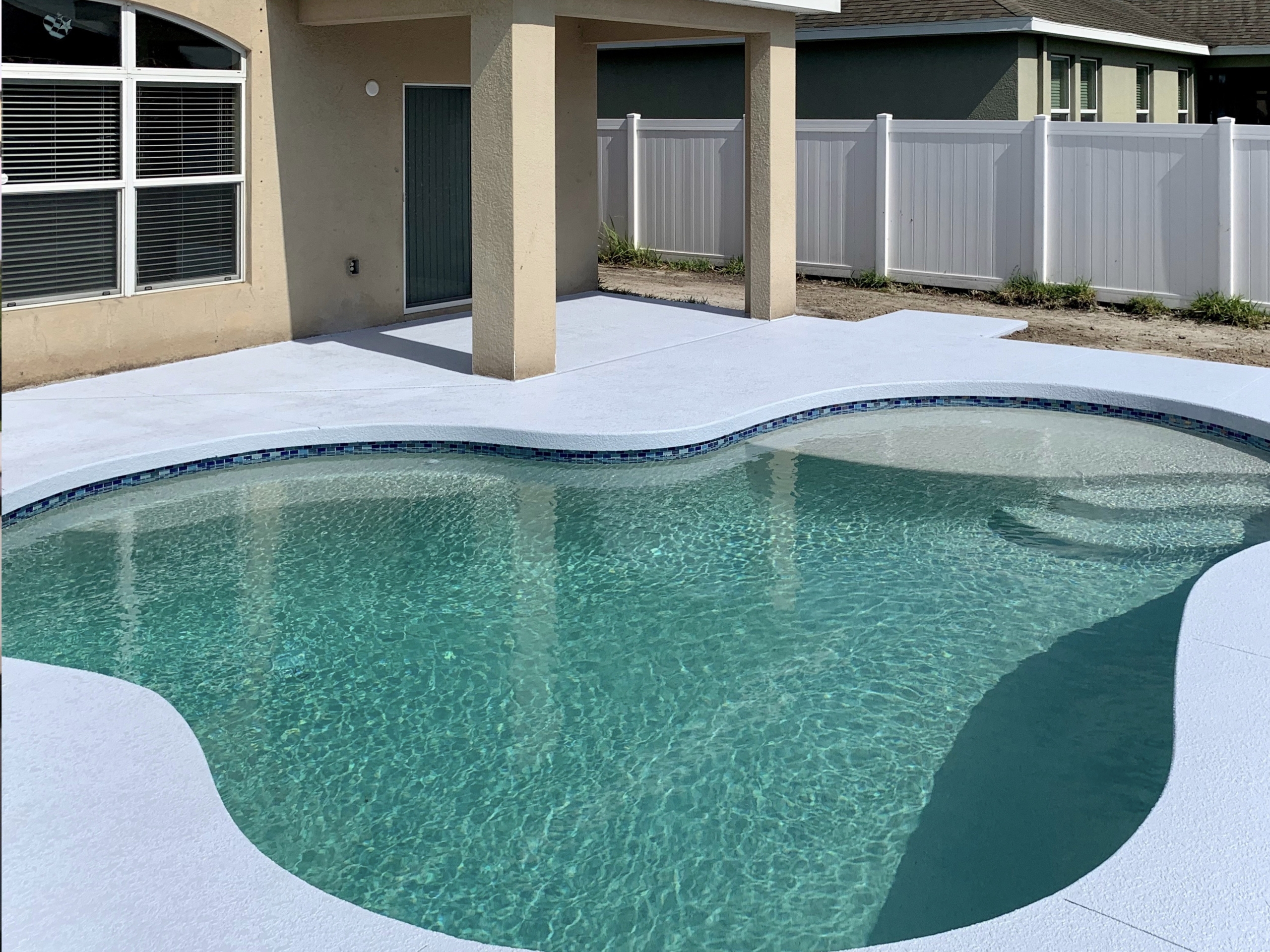Most people would just like the bottom line when deciding what type of pool construction to go with. Whether it be a Gunite or a shotcrete swimming pool. I have found that when researching this topic, the results can be convoluted and have an opinion first approach. Simply said, there is a lot of false information out there when it comes to building a swimming pool. Opinions tend to take away from the facts, and the end product is half truths leaving you wondering if you made the right decision. This post is to help shed light on a somewhat foggy subject by breaking down each type of process. Here at IPD Pool & Spa we believe an informed decision, is the best decision.
Gunite and shotcrete explained
Let’s start off with the basics. Shotcrete means pneumatically applied concrete. For arguments sake in this article we will refer to wet mix as shotcrete and dry mix as gunite. When we say wet or dry mix concrete, all we are saying is when water is introduced into the concrete mixture. Gunite (dry mix) still has water in the mixture albeit a lot less than (wet mix, in most instances). Water is introduced at the very end of the nozzle during the application process of gunite and the amount of water can be adjusted on the fly. Water is introduced into shotcrete before it is even put into the hose to apply.
So while both methods are considered shotcrete, they are two different processes. So which is better? A gunite or a shotcrete swimming pool? The answer is, if done correctly, they both are. The problem is, how do you know if you are getting a quality product? This is where some companies in the area allow homeowners to get the wool pulled over their eyes.
If you talk to professionals in the trades you will hear talk that wet mix shotcrete is stronger than gunite, and that is simply not true. It’s all in how the process is applied.
Gunite problems
Gunite should be applied in a specific manner WITHOUT ALTERED EQUIPMENT, and the same rule applies for shotcrete. What do we mean by altered equipment? As a homeowner you can tell at the shoot by a few simple steps if you are getting a quality product. First off, the floor and cove in a swimming pool should always be shot first. The reason for this is because of rebound. Rebound is anything that doesn’t stick to the wall. Once Rebound bounces off the wall and hits the floor it is garbage and can’t be used again. Any material that compromised needs to be removed from the pool. If the floor is not shot first, but the walls are, the rebound will hit the floor and go underneath the wire grid.
Now as common sense would have it, it’s not exactly easy to fit a shovel underneath a wire grid. In fact in most areas, it simply can’t be done. If you see a gunite pool with no rebound outside of the pool, it’s because it’s still in the pool. This problem runs rampant in our area, and unfortunately it’s easy for some people to do a poor job when homeowners aren’t informed.
The next thing that is a huge problem with gunite is altered equipment. Everything in gunite is designed for a specific purpose, and regardless of what anyone says, altering equipment will lead to a less than performance of the rig. What we are speaking about specifically is the nozzle. See the picture below and see if you can spot the difference.
Tampered gunite nozzle
SPOT THE DIFFERENCE?
The Nozzle on the left was found on a job of one of our competitors, the one on the right is a brand new unaltered nozzle. As a homeowner you can spot this right as a company shows up to shoot your swimming pool. Why would someone lop the front of a nozzle off? The answer is quite simple, because it makes the job easier to shoot. Gunite derives its strength from the high pressure that the material is applied. Taking the front 6 inches or so off a nozzle creates less pressure and makes it easier for the materials to come out of the hose. The nozzle gradually tapers down, roughly a two inch diameter opening.
The one on the left is well over three inches in diameter. You can easily test this out on your own with a garden hose. If you put a squirt nozzle on your water hose, see if there is a difference between using the nozzle and not using a nozzle. This experiment is obviously magnified, but the concept is still the same. High pressure and a small opening equals higher pressure. High pressure and a larger opening equals less than true performance pressure. This is a key factor when deciding if you should go with a gunite or shotcrete swimming pool.
So what about shotcrete (wet mix)? Again the process of shotcrete when done correctly is an excellent product. The problems above can plague shotcrete as well, though it isn’t as common.
Problems with shotcrete
The two main problems with shotcrete are the materials and the warranty. When shotcrete gets ordered through a ready mix company and is shot in a timely manner, no harm no fowl. The problem is when issues occur. Let’s be honest, in construction mistakes happen and have to be fixed. If the shotcrete application is halted because of a mistake, what’s telling the concrete not to cure? The concrete truck is still rotating with wet concrete still in it. The answer, most of the time is adding more water. The compression strength of concrete gets weakened every time more water is introduced into the original mix design. The answer to this would be, is your shotcrete guy using ready mix or a volumetric mixer?
Volumetric mixers can stop and start as many times as needed just like a gunite truck because water isn’t added until it is ready to use. A ready mix truck does not have this luxury. While I’m not saying a quality product cannot be achieved using a ready mix concrete truck, it adds a degree of hustle that doesn’t have to be necessary.
Who has the better warranty?
So what about the warranty? With most shotcrete companies, the warranty doesn’t go far at all if there even is one. The argument being that, they are just applicators and they can’t warranty a product that they don’t produce. The concrete company produces the concrete, and they just apply it. By comparison gunite warranties are typically limited lifetime. Limited, meaning it will last as long as the original homeowner stays in the house. Once the homeowner sells the house the warranty is null and void. Here at IPD Pool & Spa we decided if we are going to do the construction, we are going to stand behind our product. That is why at IPD Pool & Spa we also give the option to transfer the warranty to the new homeowner.
Hopefully this article brings to light some of the issues with construction, that make you a more informed consumer when choosing what type of swimming pool to go with. Whether you go with a gunite or a shotcrete swimming pool, both can last a lifetime with a qualified contractor. While there are other options out there, such as fiberglass swimming pools, you just don’t get the customizability of a concrete swimming pool. Pool Designs are only limited to the imagination.
For more information on Shotcrete and Gunite check out this website:

